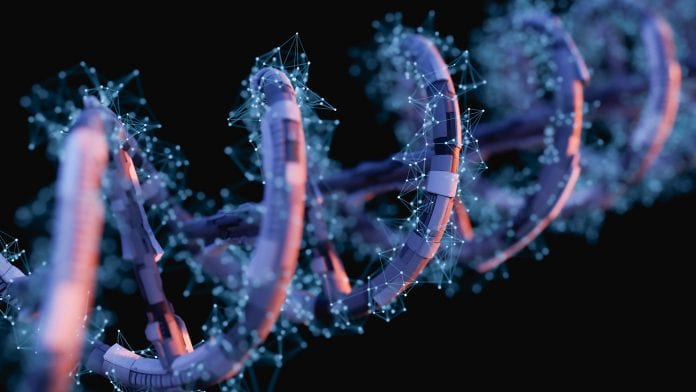
Envision a day when a mobile bedside bioprinter filled with a patient’s own cells can be wheeled right next to them to heal wounds – well this day is approaching us sooner than you think.
The scientists of Wake Forest Institute for Regenerative Medicine (WFIRM) have created a mobile bedside bioprinter, the first of its kind, that allows bi-layered skin to be printed directly onto patients, helping to heal wounds or burns by printing skin, layer by layer.
What do you know about skin regeneration?
Affecting millions of Americans, chronic, large or non-healing wounds such as diabetic pressure ulcers are especially costly because they often require multiple treatments. It is also estimated that burn injuries account for 10-30% of combat casualties in conventional warfare for military personnel.
The major skin cells – dermal fibroblasts and epidermal keratinocytes – are easily isolated from a small biopsy of uninjured tissue and expanded.
Fibroblasts are cells that synthesise the extracellular matrix and collagen that play a critical role in wound healing while keratinocytes are the predominant cells found in the epidermis, the outermost layer of the skin.
The mobile bedside bioprinter
Sean Murphy, Ph.D., a WFIRM assistant professor, explains: “The unique aspect of this technology is the mobility of the system and the ability to provide on-site management of extensive wounds by scanning and measuring them in order to deposit the cells directly where they are needed to create skin.”
For this revolutionary piece of equipment, the cells are mixed into a hydrogel and placed into the bioprinter. Then by using integrated imaging technology involving a device that scans the wound, the system feeds the data into the software to tell the print heads which cells to deliver exactly where in the wound layer by layer.
Doing so replicates and accelerates the formation of normal skin structure and function.
The researchers demonstrated proof-of-concept of the system by printing skin directly onto pre-clinical models.
WFIRM Director Anthony Atala, M.D. adds: “The technology has the potential to eliminate the need for painful skin grafts that cause further disfigurement for patients suffering from large wounds or burns.
“A mobile bioprinter that can provide on-site management of extensive wounds could help to accelerate the delivery of care and decrease costs for patients.”
So, what does the future hold for treating wounds?
The next step is to conduct a clinical trial in humans. Currently, skin grafts to treat and heal wounds and burns are the standard technique, but adequate coverage of wounds is often a challenge particularly when there is limited availability of healthy skin to harvest.
Skin grafts from donors are an option, but risk immune rejection of the graft and scar formation.
With the mobile bedside bioprinter system the researchers could see new skin forming outward from the centre of the wound and this only happened when the patient’s own cells were used, as the tissues were accepted and not rejected.







